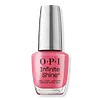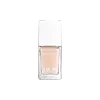What's inside
What's inside
 Benefits
Benefits

No benefits
 Concerns
Concerns

 Ingredients Side-by-side
Ingredients Side-by-side

Ethyl Acetate
PerfumingButyl Acetate
MaskingNitrocellulose
Acetyl Tributyl Citrate
MaskingTosylamide/Epoxy Resin
Isopropyl Alcohol
SolventAcrylates/Hydroxyesters Acrylates Copolymer
Stearalkonium Hectorite
Gel FormingSucrose Acetate Isobutyrate
Adipic Acid/Neopentyl Glycol/Trimellitic Anhydride Copolymer
Methicone
EmollientCitric Acid
BufferingDimethicone
EmollientCI 77891
Cosmetic ColorantCI 15850
Cosmetic ColorantEthyl Acetate, Butyl Acetate, Nitrocellulose, Acetyl Tributyl Citrate, Tosylamide/Epoxy Resin, Isopropyl Alcohol, Acrylates/Hydroxyesters Acrylates Copolymer, Stearalkonium Hectorite, Sucrose Acetate Isobutyrate, Adipic Acid/Neopentyl Glycol/Trimellitic Anhydride Copolymer, Methicone, Citric Acid, Dimethicone, CI 77891, CI 15850
Ethyl Acetate
PerfumingButyl Acetate
MaskingNitrocellulose
Adipic Acid/Neopentyl Glycol/Trimellitic Anhydride Copolymer
Isopropyl Alcohol
SolventAcetyl Tributyl Citrate
MaskingStearalkonium Bentonite
Gel FormingCaprylic/Capric Triglyceride
MaskingPrunus Armeniaca Kernel Oil
MaskingDimethyl Oxobenzo Dioxasilane
Skin ConditioningPistacia Lentiscus Gum
MaskingPrunus Amygdalus Dulcis Oil
Skin ConditioningAcrylates Copolymer
Adipic Acid/Fumaric Acid/Tricyclodecane Dimethanol Copolymer
Sucrose Acetate Isobutyrate
Methicone
EmollientCitric Acid
BufferingPaeonia Officinalis Flower Extract
TonicCI 77891
Cosmetic ColorantCI 19140
Cosmetic ColorantCI 15850
Cosmetic ColorantEthyl Acetate, Butyl Acetate, Nitrocellulose, Adipic Acid/Neopentyl Glycol/Trimellitic Anhydride Copolymer, Isopropyl Alcohol, Acetyl Tributyl Citrate, Stearalkonium Bentonite, Caprylic/Capric Triglyceride, Prunus Armeniaca Kernel Oil, Dimethyl Oxobenzo Dioxasilane, Pistacia Lentiscus Gum, Prunus Amygdalus Dulcis Oil, Acrylates Copolymer, Adipic Acid/Fumaric Acid/Tricyclodecane Dimethanol Copolymer, Sucrose Acetate Isobutyrate, Methicone, Citric Acid, Paeonia Officinalis Flower Extract, CI 77891, CI 19140, CI 15850
Ingredients Explained
These ingredients are found in both products.
Ingredients higher up in an ingredient list are typically present in a larger amount.
Acetyl Tributyl Citrate is a fragrance.
We don't have a description for Adipic Acid/Neopentyl Glycol/Trimellitic Anhydride Copolymer yet.
We don't have a description for Butyl Acetate yet.
Ci 15850 is the pigment color red. It is an azo dye and created synthetically.
Azo dyes need to be thoroughly purified before use. This allows them to be more stable and longer-lasting.
This ingredient is common in foundations, lipsticks, and blushes. This color is described as brown/orangey red.
It has many secondary names such as Red 6 and Red 7. According to a manufacturer, Red 6 usually contains aluminum.
Learn more about CI 15850Ci 77891 is a white pigment from Titanium dioxide. It is naturally found in minerals such as rutile and ilmenite.
It's main function is to add a white color to cosmetics. It can also be mixed with other colors to create different shades.
Ci 77891 is commonly found in sunscreens due to its ability to block UV rays.
Learn more about CI 77891Citric Acid is an alpha hydroxy acid (AHA) naturally found in citrus fruits like oranges, lemons, and limes.
Like other AHAs, citric acid can exfoliate skin by breaking down the bonds that hold dead skin cells together. This helps reveal smoother and brighter skin underneath.
However, this exfoliating effect only happens at high concentrations (20%) which can be hard to find in cosmetic products.
Due to this, citric acid is usually included in small amounts as a pH adjuster. This helps keep products slightly more acidic and compatible with skin's natural pH.
In skincare formulas, citric acid can:
While it can provide some skin benefits, research shows lactic acid and glycolic acid are generally more effective and less irritating exfoliants.
Most citric acid used in skincare today is made by fermenting sugars (usually from molasses). This synthetic version is identical to the natural citrus form but easier to stabilize and use in formulations.
Read more about some other popular AHA's here:
Learn more about Citric AcidEthyl Acetate is a fragrance.
Isopropyl Alcohol is more commonly known as rubbing alcohol. It is most commonly used as a solvent, meaning it helps other ingredients dissolve.
This ingredient is an astringent alcohol. Astringent alcohols may also irritate skin as they high amounts may strip away your skin's natural oils.
Other types of astringent alcohols include:
According to the National Rosacea Society based in the US, you should be mindful of products with these alcohols in the top half of ingredients.
Any type of sanitizing product will have high amounts of alcohol to help kill bacteria and viruses.
Learn more about Isopropyl AlcoholMethicone is a type of silicone and is a simpler form of dimethicone.
Silicones are used to enhance the texture of products and have emollient properties. Methicone is used to give products a silky texture and improves spreadability.
We don't have a description for Nitrocellulose yet.
We don't have a description for Sucrose Acetate Isobutyrate yet.